Setting up a business is easier than ever, thanks to the internet. You can sell a product or a service online with little hassle – all you need is an idea, a supplier and a website.
And because the cost of starting an online business is relatively low, many have decided to take advantage. In fact, an enormous 46,000 new businesses started in the UK between 2022 and 2023.
Two key models are responsible for this gold rush: dropshipping and ecommerce.
While the former has lower stakes and margins, making it ideal for first-time and casual sellers, traditional ecommerce is for high-rolling businesses looking for scale.
In this blog, we’re going to examine the key differences between the two so you can pursue the model that best suits your needs.
Let’s get started 👇
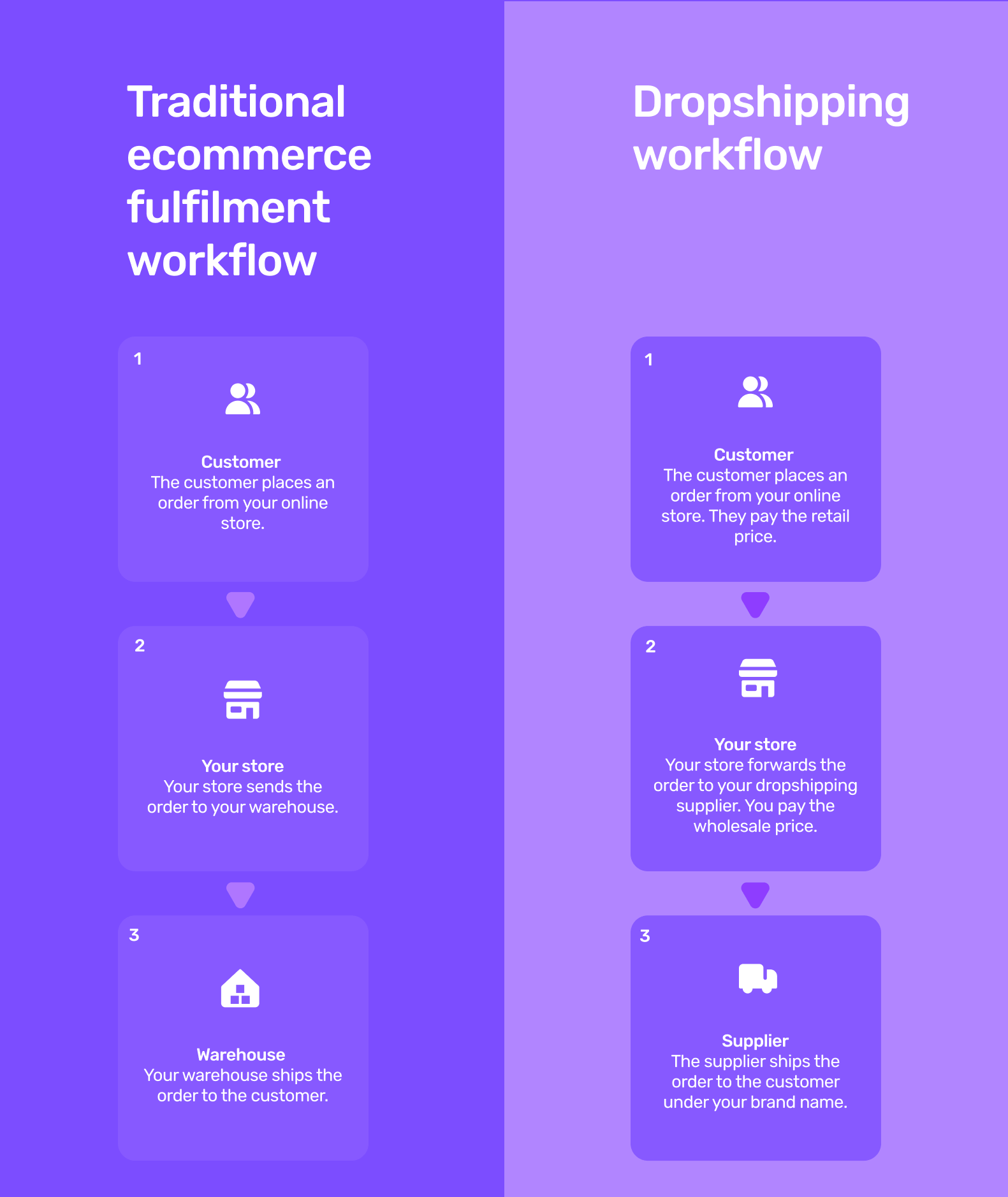
What is ecommerce?
Ecommerce is the process of buying and selling products and services online, allowing you to widen your company’s reach, strengthen your brand and, ultimately, maximise profits. By comparison to bricks-and-mortar stores, the startup costs for ecommerce are lower, meaning just about anyone can engage in it.
According to Statista, the UK ecommerce market revenue will be a staggering $149.30 billion in 2024, and that’s expected to show an annual growth rate of 6% by 2028. Worldwide, ecommerce brought in a massive $6.3 trillion USD. It’s a huge industry, and all estimates forecast ecommerce to overtake every other form of shopping in the coming years.
Examples of ecommerce businesses include:
- Asos
- Boohoo
- Amazon
- JD.com
- Wayfair
- eBay
There are literally millions of others selling all manner of items, including clothes, technology, food, jewellery, homeware and just about anything else you can imagine.
When a company follows the traditional ecommerce model, they have a website listing products for sale and consumers choose the products they want to buy. They add them to their basket and checkout, making a card payment.
The company receives the order and processes it. They’ll have a warehouse space where they pick the stock from, pack it up, and send it to the customer via a courier. Larger companies like Amazon may use their own delivery drivers.
Ecommerce businesses rely on a chain of key stakeholders who help them to generate and fulfil orders. These include:
- Suppliers and manufacturers
- Inventory management specialists
- Payment gateways
- Logistics and shipping partners
- Marketers
- Technology and IT support
- Customer service agents
Smaller businesses might not have dedicated teams, but the process remains the same.
The product comes directly from the manufacturer and they sell it from their warehouse, taking stock from their own site and handling the order in-house every step of the way.
What is dropshipping?
Dropshipping is a form of ecommerce but follows a slightly different process. Dropshipping is when a retailer sells products to customers but a third-party handles the fulfilment of the order. Simply put, a dropshipping company sells products they don’t physically have as they don’t stock or ship any items themselves.
To do dropshipping, you still need a website and you still need suppliers, but you don’t need a physical store or warehouse. Dropshipping accounts for around a quarter of all ecommerce sales, but like ecommerce, it’s a business model that’s growing in prevalence.
Dropshipping is common in the fashion industry – specifically personalised goods. A user will log on to a website, browse the items online, add the ones they want to their basket and then checkout.
Behind the scenes, the company they bought from passes the order to a third-party supplier who creates the products and sends the items out from their depot. The original company does all the customer service and fronts the operation – but they never even touch the product.
Examples of dropshipping companies include:
- AliExpress
- CJdropshipping
- Meesho
- Warmly
- Printify
Generally speaking, customers won’t know if their product has been dropshipped and there are two companies behind the order. That’s because all their contact is with one company.
Benefits of ecommerce | Drawbacks of ecommerce |
|
|
|
|
|
|
|
|
Benefits of ecommerce
There are a number of benefits to using the traditional ecommerce method, hence why thousands of new ecommerce businesses are set up every single day.
Caters to the modern way of shopping
Firstly, it’s fast becoming the preferred way to shop. Shoppers are moving online, and current data predicts that by 2040 – in less than 20 years – over 95% of all purchases will be made online.
This is largely down to the integration of the internet in every aspect of our lives, but also due to the increased demand for convenience. People work long hours and often don’t have time to buy things physically. Ecommerce offers them an invaluable solution to that problem.
Bolsters physical retailers
By having an online store, small bricks-and-mortar stores can tap into additional revenue streams as they can now reach a broader audience and potentially attract customers from all over the world.
Also, selling online provides these stores with a competitive advantage and they can pace with larger competitors, which can be much harder to do on a high street.
Gives more options to retailers and consumers
On top of boosting brand awareness and generating a more reliable source of income, another benefit for retailers (and consumers) is that the internet isn’t bound by square footage.
You can sell a vast range of products and not have to worry about the arduous task of visual merchandising it all.
From a business perspective, this is great because you can offer more solutions to your customers’ problems. For consumers, it provides more choices to find the right fit and make the best investment for them.
Cheaper to run
A lot of ecommerce businesses are just that:
They've never had and never will have a physical store.
The benefit is that you don’t need to pay extortionate rent rates in expensive shopping centres or retail parks. This allows you to get up and running from pretty much anywhere – including your living room.
There are countless dining room to boardroom success stories in the ecommerce world, with numerous high-profile brands, such as Amazon, starting from the confines of a house.
The only outlay at the beginning is the cost of the goods. As the business grows, it may need to expand into a warehouse, but this remains cheaper than running a shop as well.
Drawbacks of ecommerce
For all its glory, ecommerce is not without its flaws. There are undoubtedly more benefits than negatives, but here are some things to be mindful of.
Requires end-to-end management
If you’re new to selling online, you’ll need to get to grips with how things work. After all, the responsibility to fulfil your customer’s orders lies solely with you.
This means you need to get used to order processing, distribution and ensuring you have all the stock available, which is a full-time job in itself.
Requires physical space for storage
With a traditional ecommerce fulfilment process, you need premises to operate from as it involves maintaining physical inventory. Eventually, you’ll graduate from your dining room to a small office and from there, to a warehouse.
The downside is that the bigger the property you operate from, the more expensive it’ll be. If you’re not prepared, this could catch you off guard.
Risk of obsolescence
As society ebbs and flows, the inventory you hold can quickly become outdated.
Think of those who made the questionable moral decision to stockpile items in COVID, only for governments to make them accessible en masse soon after.
Even if you have the best intentions, you may still suffer financial losses by overstocking certain items.
Intense competition
While competition is a good thing for customers, it puts a serious dent in the profit margins of a business. The ecommerce sector is saturated with many sellers selling similar products, but all at different prices.
This competition leads to fierce price wars where they keep lowering their prices to attract customers. If you’re a new business, this can make it difficult for you to sustain or invest in quality products.
To counter it, you might need to heavily invest in marketing and advertisements to acquire new customers, making your overall profitability even lower.
Benefits of dropshipping | Drawbacks of dropshipping |
|
|
|
|
|
|
|
|
Benefits of dropshipping
The dropshipping model shares the same benefits as ecommerce and then some, but because it’s a different business model, it does have its own advantages.
No premises required
Dropshipping businesses don’t hold stock, meaning they don’t need a storage facility. They also don’t send stock out, so they don’t even need an office to process deliveries from.
You can run a dropshipping business from your bedroom if you wish, with absolutely no need to spend money on renting out business premises in any capacity.
This will save money, allowing you to reduce your overhead costs and reap more profits.
No contact with stock
The good thing about having no contact with stock is that the onus is on you supplier, rather than you, to keep on top of stock levels.
As a result, you can put all your energy into sourcing new products and building excellent client relationships.
No staff
Only the biggest dropshipping companies have staff on hand to deal with customers, but until you reach that point, you can go it alone.
For those just starting out, this is a great way to build up a brand that is 100% yours.
Global reach
Any ecommerce business can sell globally (in theory), but not every company does. This is because international orders have different delivery protocols, with many having to pay customs on imported goods.
Dropshipping companies can get around this by using manufacturers based on every continent and in every country. This means no customs need to be paid and the price remains low and affordable for the customer.
As a result, many dropshipping businesses operate on a global scale as opposed to a national one.
Drawbacks of dropshipping
Dropshipping also has its downsides. While it’s a completely viable business model, there are aspects that you must be prepared for.
Low profit margins
This is one of the biggest drawbacks of dropshipping and why many businesses don’t opt for this model of ecommerce. Since dropshippers act as middlemen, they don’t have control over the pricing of their products.
On one side, they have to pay suppliers a premium for shipping a single item and on the other hand, they have to price their products according to the market. This results in slimmer profit margins compared to traditional ecommerce which benefits from buying in bulk and can price more competitively.
Limited quality control
When you don’t handle stock yourself, you can’t guarantee your customers the best quality, nor can you spot defects in shipments before they go out. This could expose you to customer service issues if things go wrong.
As a precaution, it’s best to order several of each item you want to sell before you start—to gauge what your customers might be getting if they place an order with you.
Refunds and returns
If something does go wrong with your stock and your client isn’t happy, you’re limited as to what you can do for them. You’ll have paid the trade price for the product and the return process will be out of your hands.
Your best option would be to offer a refund and this will need to be clearly stipulated in your terms and conditions.
Limited control over delivery timeline
One of the major drawbacks of dropshipping is the very long shipping time.
Dropshippers generally have to import products from international suppliers. This results in limited to no control over the shipping times and can frustrate customers, leading to bad customer experiences.
Additionally, they also have to pay huge shipping costs which impacts the overall cost-effectiveness of products and brings profit margins even lower.
Similarities | Differences |
Both require establishing a digital storefront, like a website or an app, to sell products | Traditional ecommerce requires the purchase and storage of inventory, while dropshipping doesn’t |
Both business models provide a global reach, allowing you to reach customers worldwide | Traditional ecommerce requires management of fulfilment and logistics, while in dropshipping it is outsourced to suppliers |
Both models employ similar marketing strategies to attract customers | Traditional ecommerce provides complete control over product quality, while in dropshipping there’s limited control |
Both models are customer-oriented and require engaging with customers to become successful | Dropshipping can be started with a minimal budget, but traditional ecommerce requires significantly more |
Dropshipping vs ecommerce: Which model should you choose?
Choosing between dropshipping and traditional ecommerce is a significant decision that requires careful consideration of various factors.
To make an informed choice, ask yourself the following questions:
- Do you want full control over the products you sell, including price, quality and availability?
- How important is it for you to establish a unique brand identity? Can you develop your brand without direct control?
- How comfortable are you with taking financial risks on purchasing and storing inventory? Are you comfortable with reduced profit margins in the dropshipping model?
- Do you have the team, time and capacity to manage inventory, order fulfilment and logistics?
- What are your long-term goals and which model aligns with those objectives?
By answering these questions, you can gain clarity on your priorities and preferences and make the right decision based on your unique business needs.
Nevertheless, we’ll go a step further and suggest that if you’re already running an offline retail store and stocking products, then you should pursue a traditional ecommerce model because it will help you scale your business. This way, you’ll have full control over your brand and won’t have to fight for the slimmest of margins.
However, if you're just starting out, we’d suggest the dropshipping model. At the starting stage, dropshipping is ideal for new online sellers, as they might face challenges running their own online store, let alone thinking about investing in inventory and a warehouse.
Want to build your online store?
Book a demoSpeak with one of our product experts today.
By proceeding you agree to Builder.ai’s privacy policy and terms and conditions

How to build an ecommerce or dropshipping store
Whether you choose ecommerce or dropshipping, one thing you absolutely need for your business is a website.
Below are the steps on how you can easily create your own ecommerce website with Builder.ai 👇
1 - Setting up store and emails
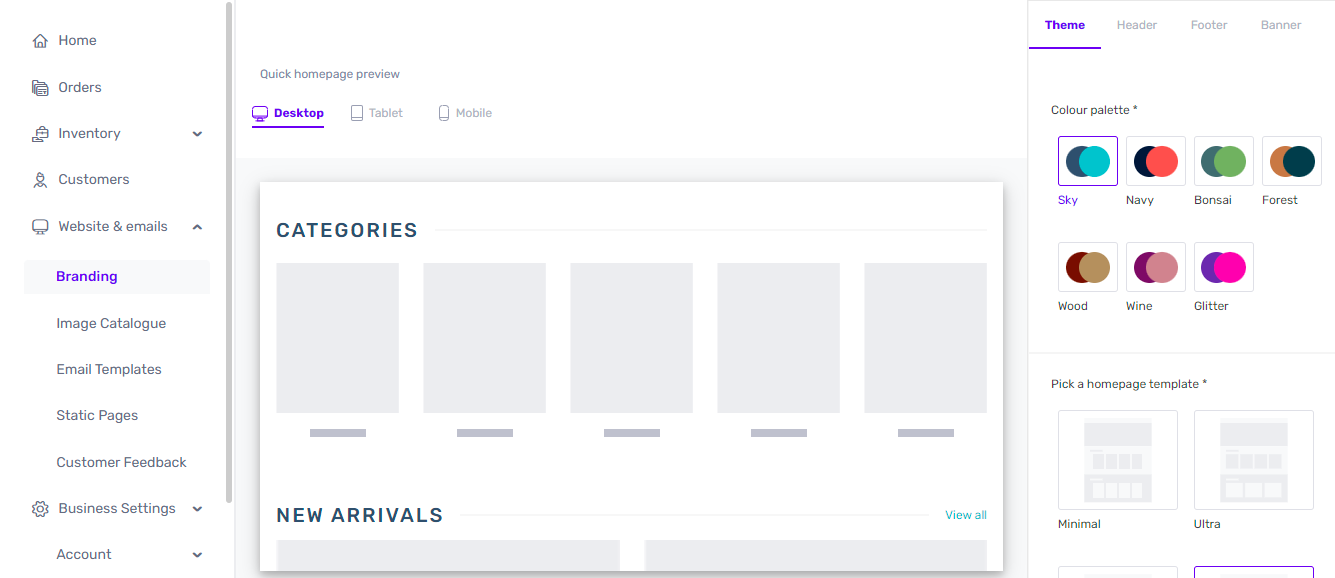
In the process of setting up your website, the branding phase plays a pivotal role in creating an appealing and user-friendly online presence.
This section allows you to add your logo, select a colour palette that aligns with your brand's identity and choose from available templates that can be customised in real-time.
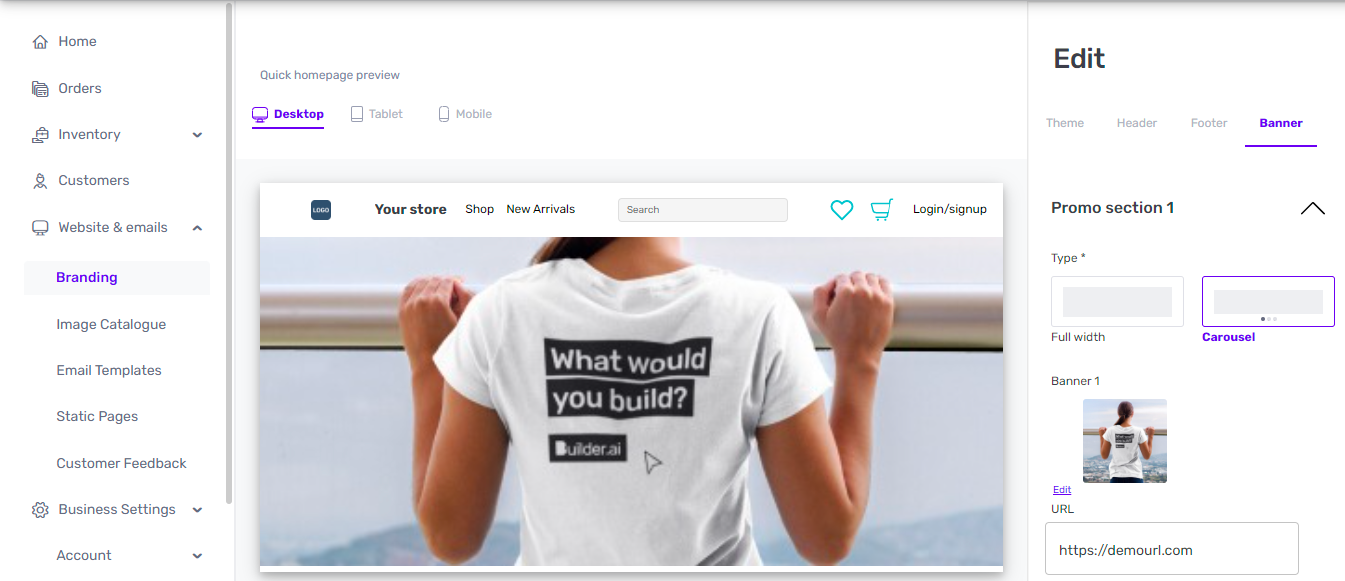
You can also use banners to highlight promotions and special offers to improve your conversion rates and preview how they look across various devices, including desktop, tablet and mobile.
Additionally, within the email templates section, you can efficiently manage customer-facing and admin emails triggered by various actions, such as user sign-ups, one-time password (OTP) verification, order confirmations and payment notifications.
With Builder.ai’s Studio Store, basic email templates are pre-filled, but customisation options are available, allowing you to edit existing templates or create entirely new ones to tailor your communication with customers and users.
2 - Configuring business settings
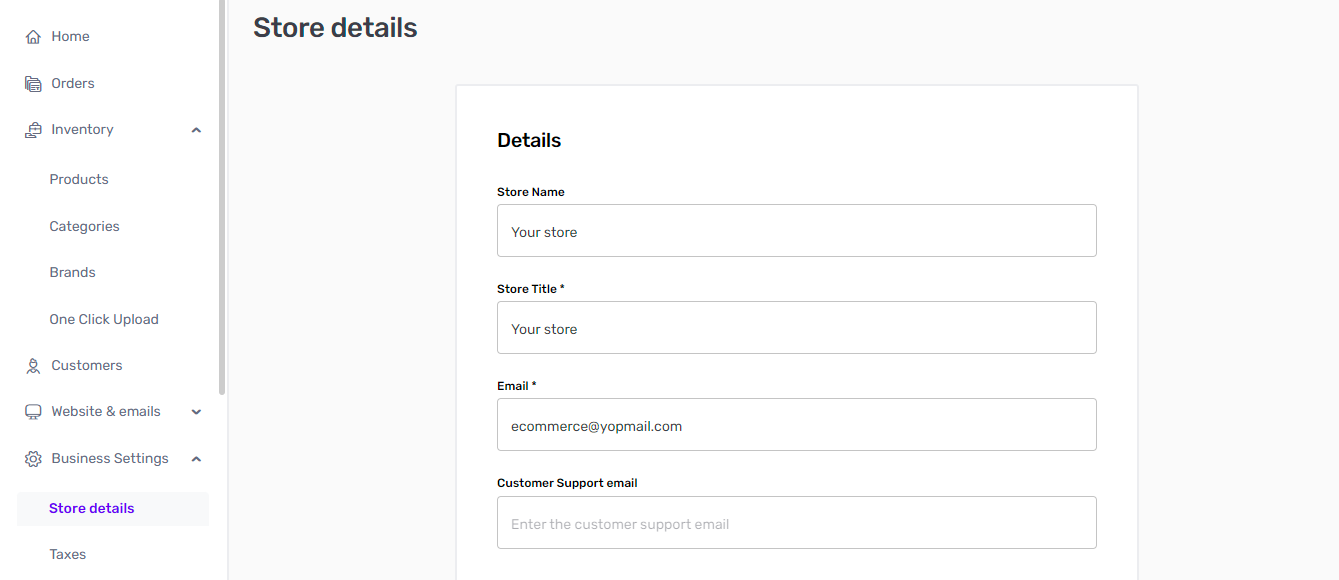
When setting up your ecommerce store, your next step is to fill out your “Store Details”.
Here, you want to enter the basic store information, including your store name, title, contact information (email, phone, WhatsApp), address and currency preferences.
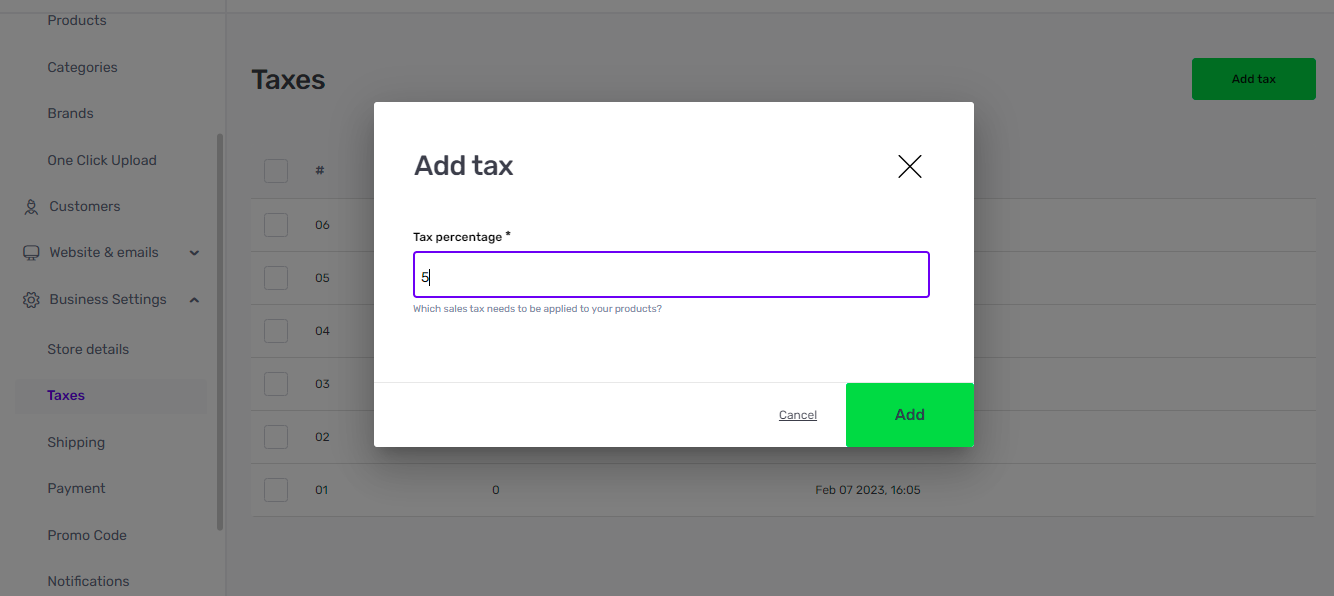
Managing taxes is equally important; within “Taxes”, you can establish the applicable sales tax rate for your products.
3 - Setting and managing inventory
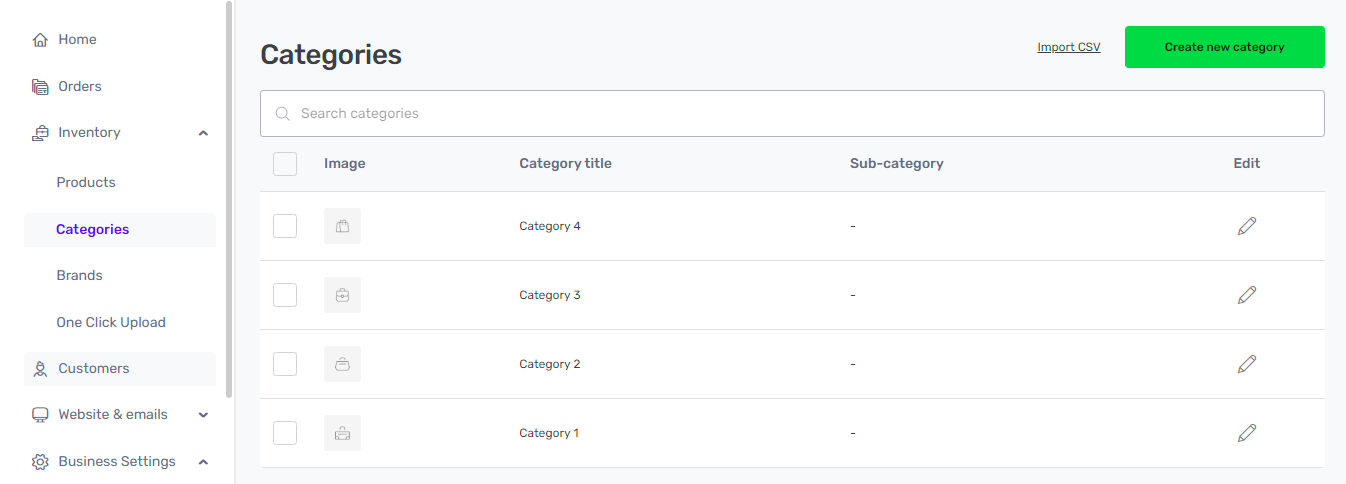
Managing your online store's inventory is a crucial aspect of running a successful ecommerce plan for your entire business. To streamline this process, you can create categories and subcategories under Inventory, helping you organise products efficiently.
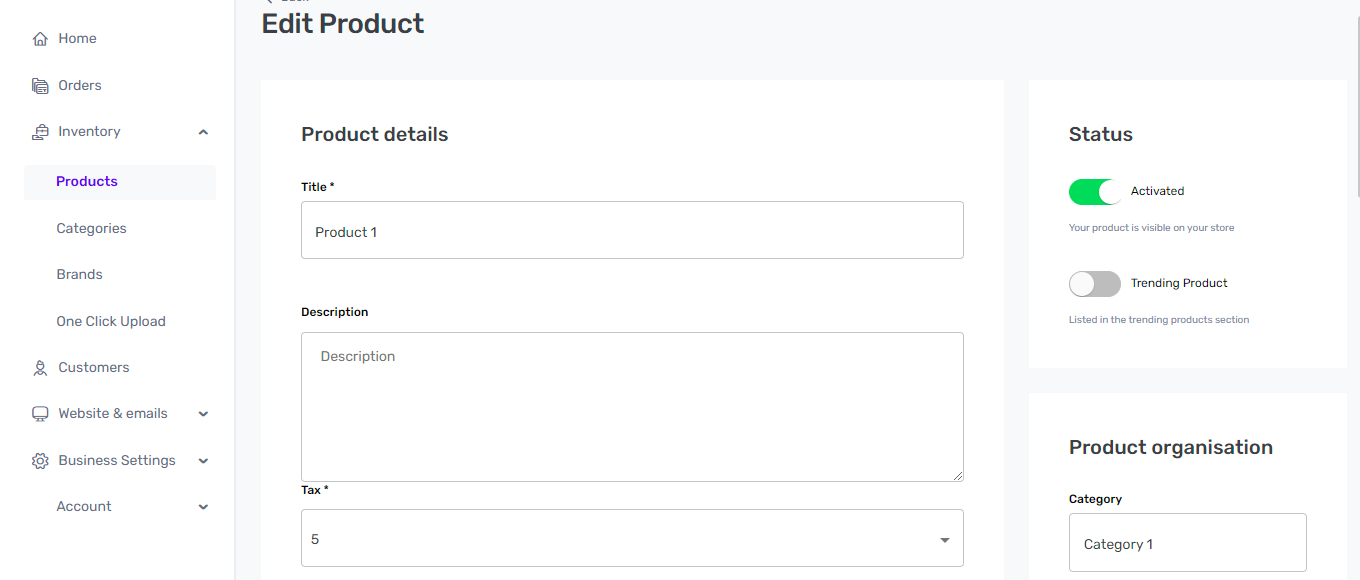
By assigning detailed product descriptions to specific categories and subcategories, such as "Electronics" and "Televisions," you make your store easy to navigate, enhancing the customer experience.
Moreover, you can upload multiple categories through CSV files, saving time and effort.
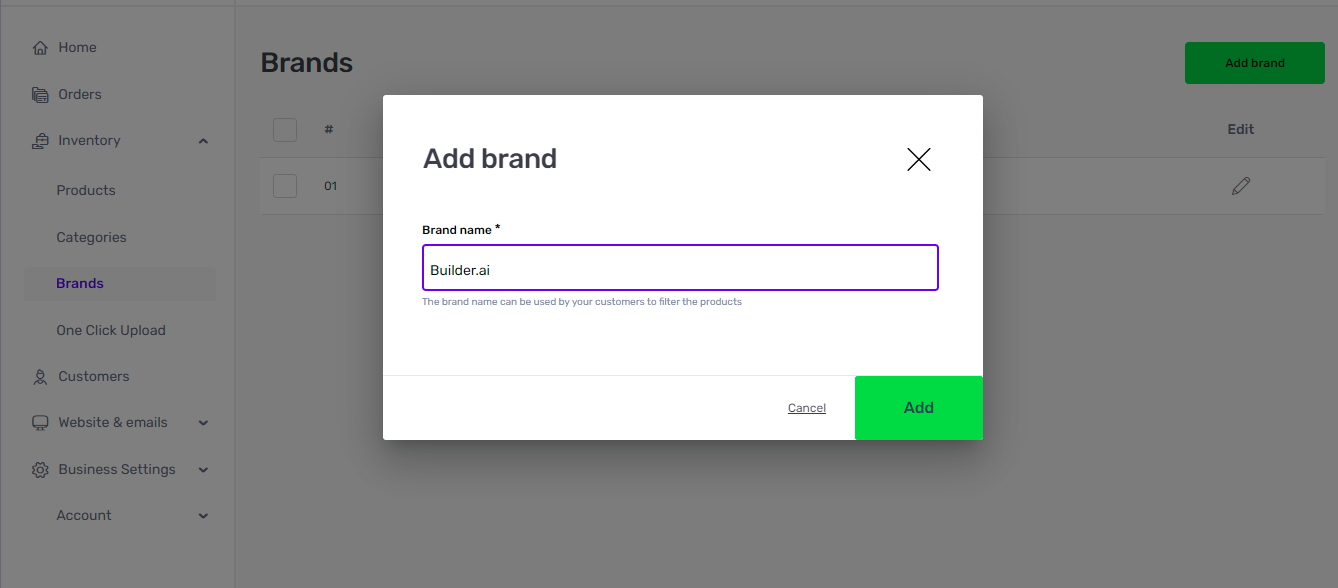
In the “Brands” section, meanwhile, you have the flexibility to add the various product brands your store offers. Whether you sell a range of brands or just your own, this feature allows you to further categorise your products and make it simple for customers to find what they’re looking for.
Furthermore, you can bulk upload product details, including variants like sizes and colours, streamlining the process of building your product catalogue.
4 - Set up payment methods and shipping costs
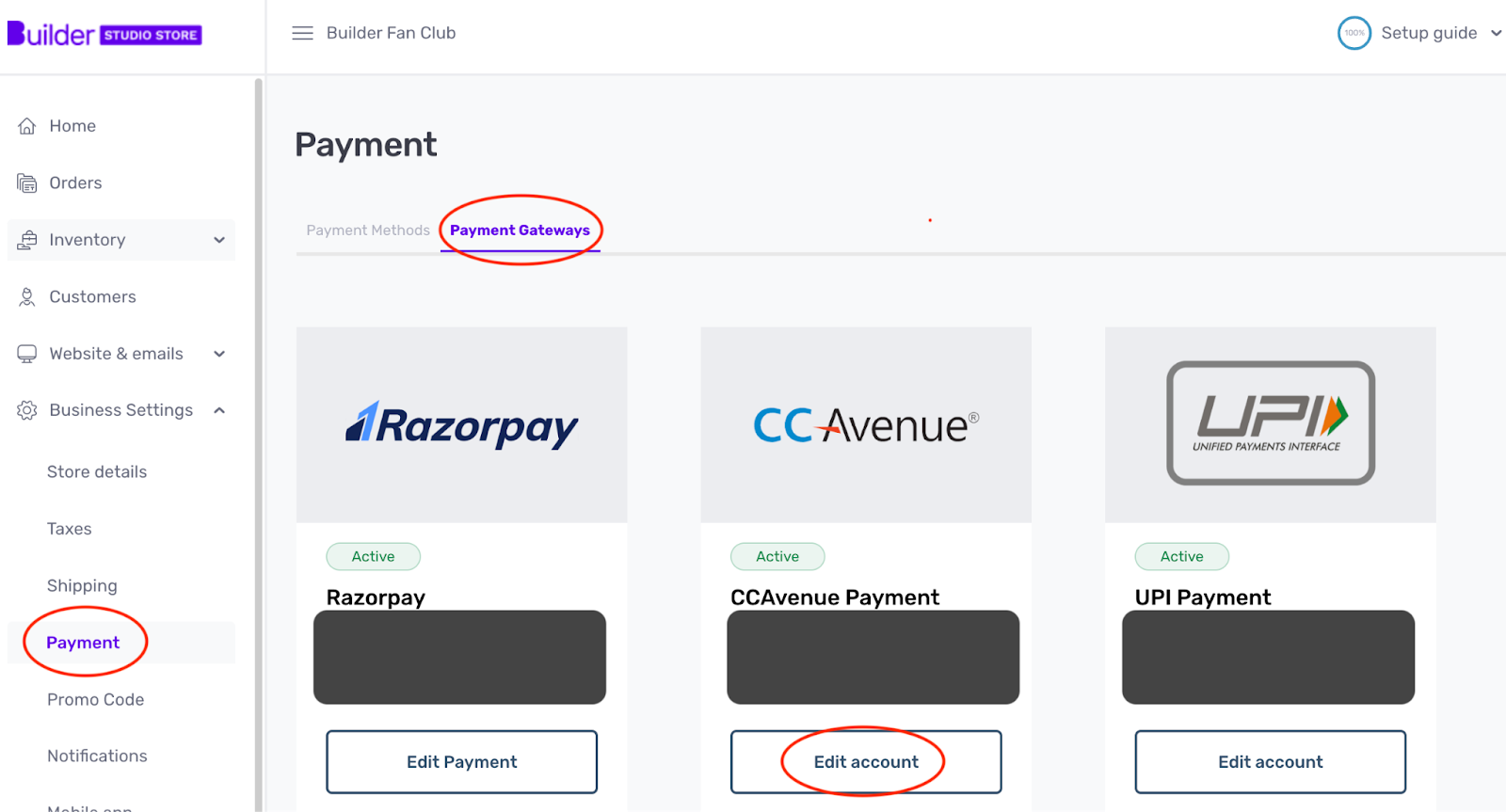
To create a seamless payment and checkout process, platforms like CCAvenue and Stripe offer seamless solutions. For CCAvenue, merchants need to create an account, obtain API keys and configure them in your store's settings.
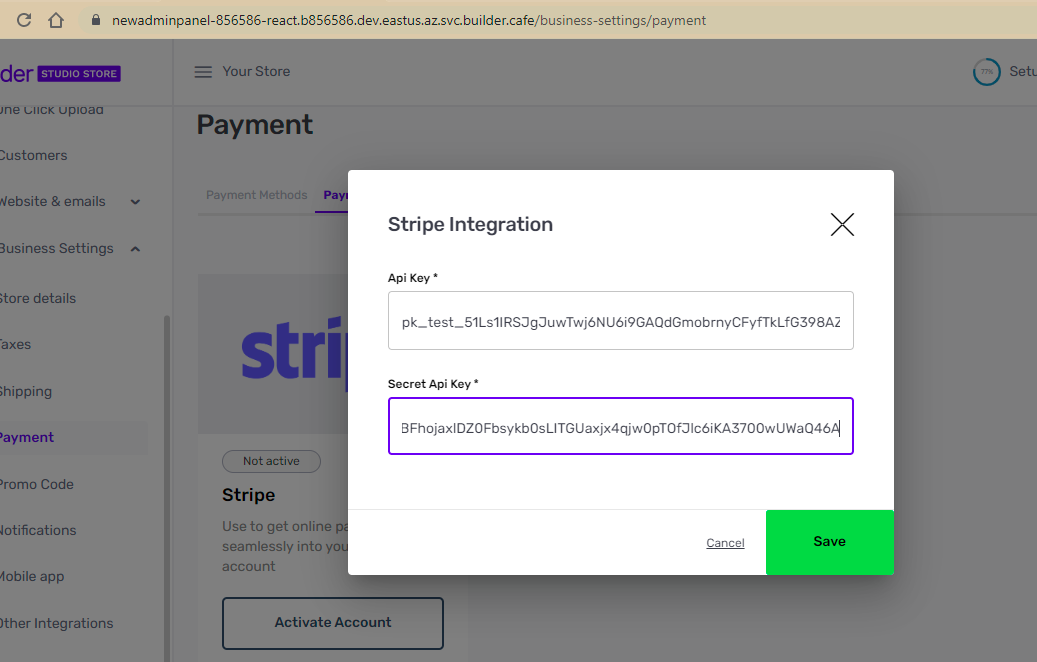
Similarly, Stripe integration involves registering an account, obtaining API keys and pasting them into your store’s settings to activate the Stripe account.
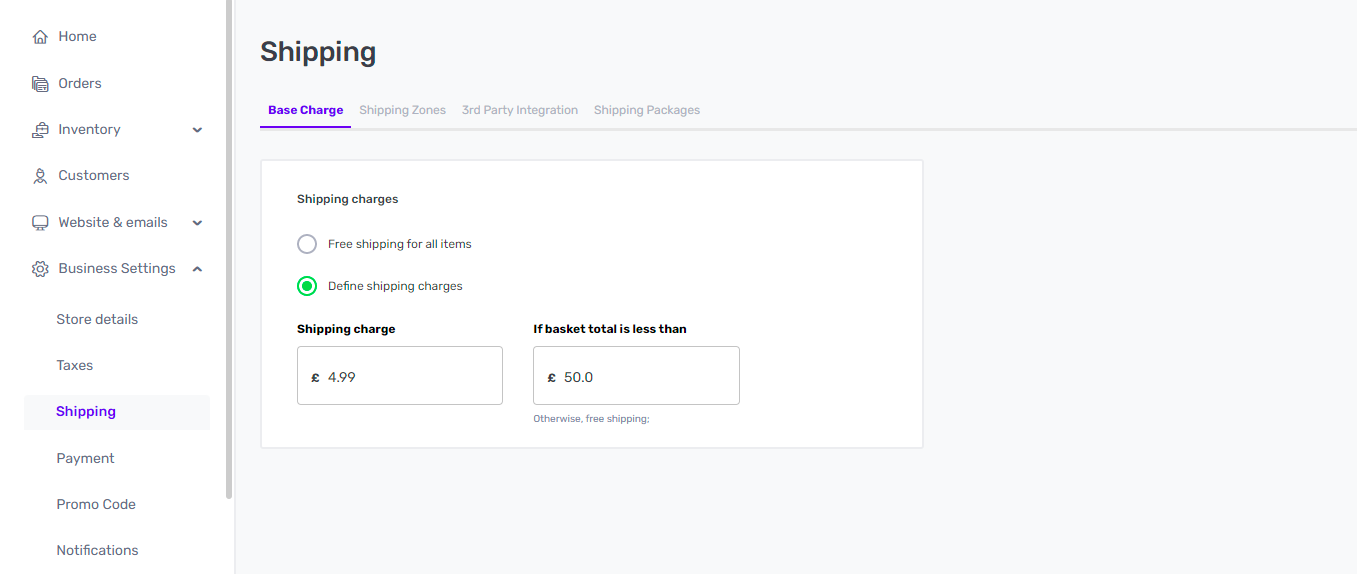
Now it's time to establish your shipping strategy.
Set up shipping options and shipping details in a way that your customers have complete clarity on their orders.
You can define shipping labels and set base charges based on order value, with an extra cost if you are a "made to order" brand.
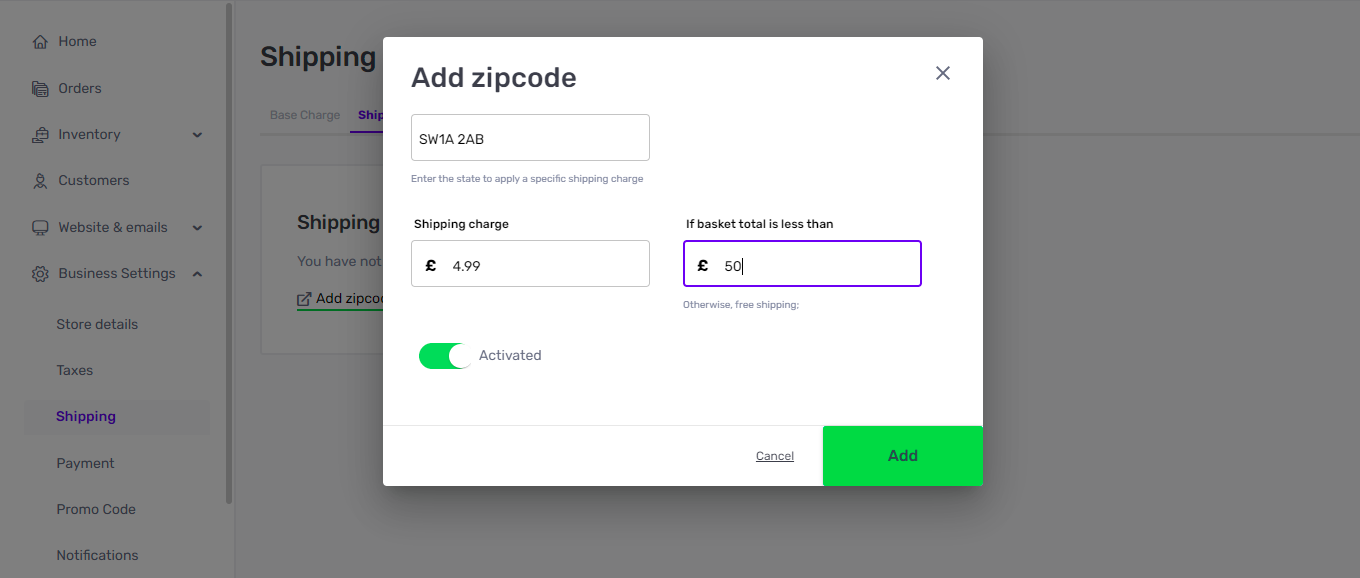
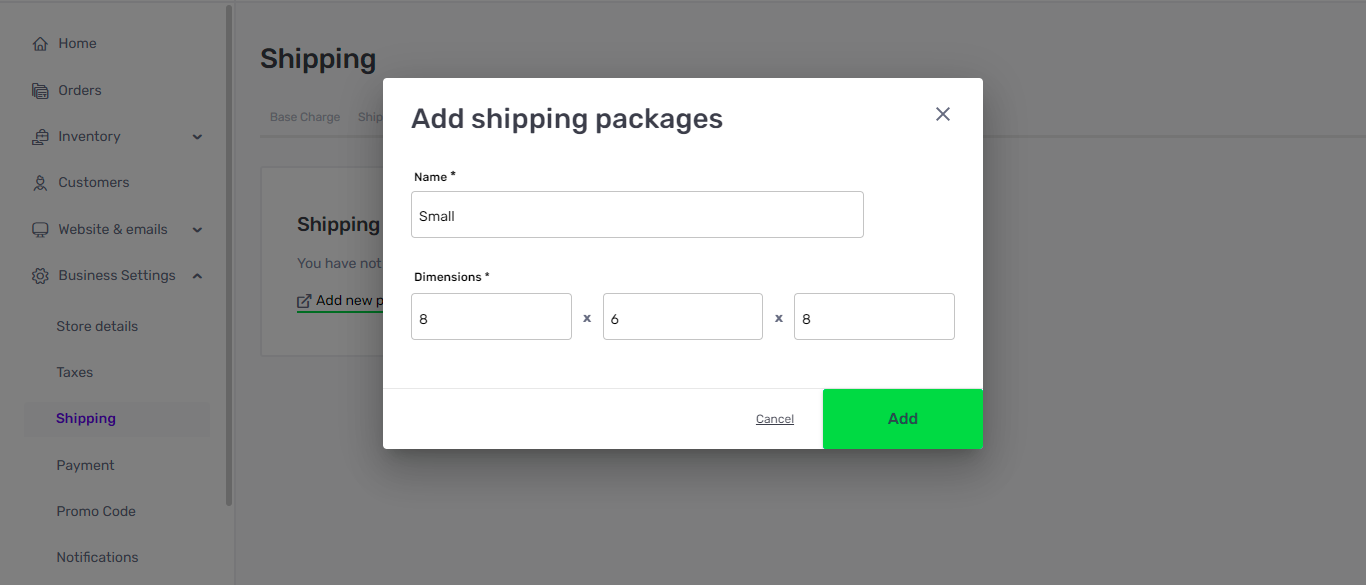
Shipping zones can be specified using zip codes and you can also set up third-party integrations with logistics partners like Shiprocket and Stuart.
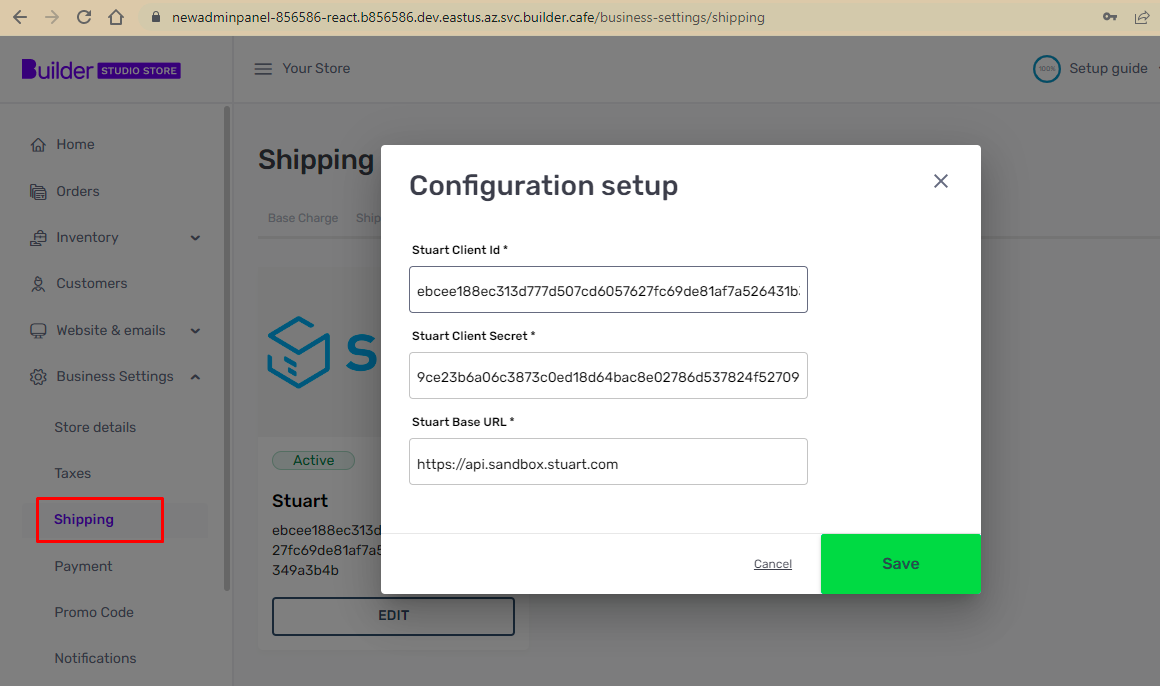
Once integrated, you can efficiently manage your payments and shipping settings.
5 - Manage orders easily
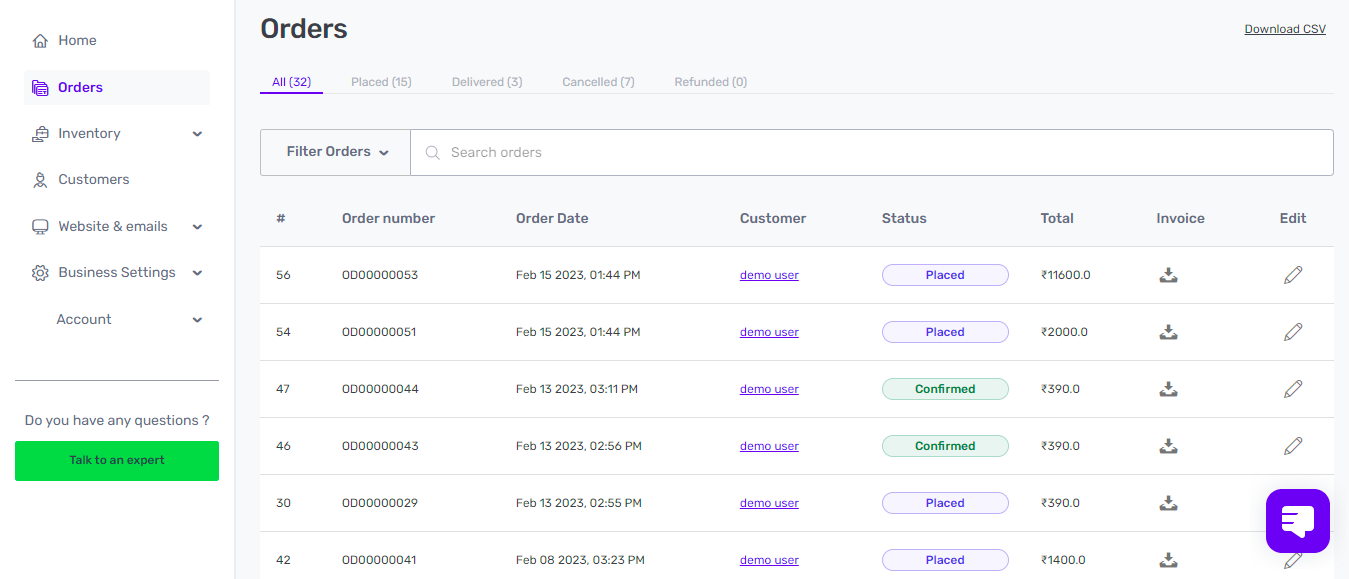
Now you're ready to launch and start accepting orders!
The “Orders” section serves as your command centre for managing orders efficiently. You can easily view, filter and process orders based on various criteria such as date range, order status and order amount.
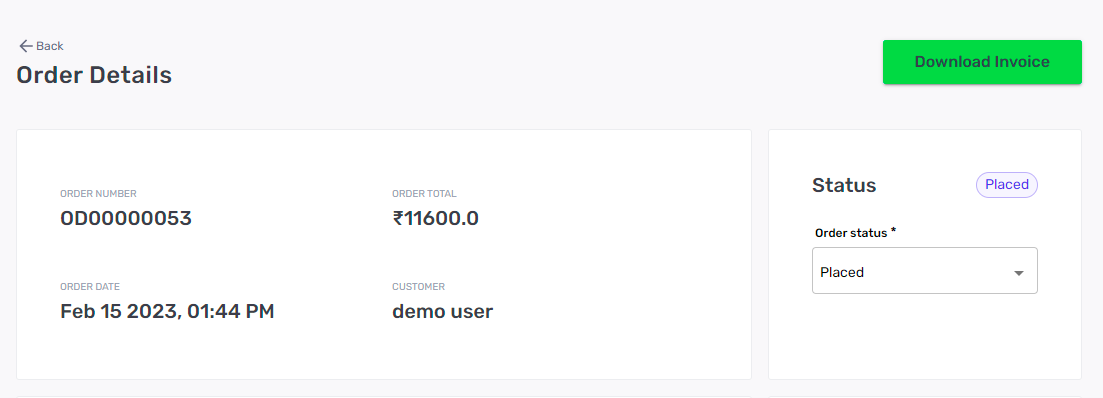
Easy access to order details includes transparency on:
- Item specifics and delivery addresses
- Manual shipping labels have options like Confirmed, In Transit, Delivered, Cancelled, Returned and Refunded
- Automatic invoice generation for each order
- Easy order detail downloads
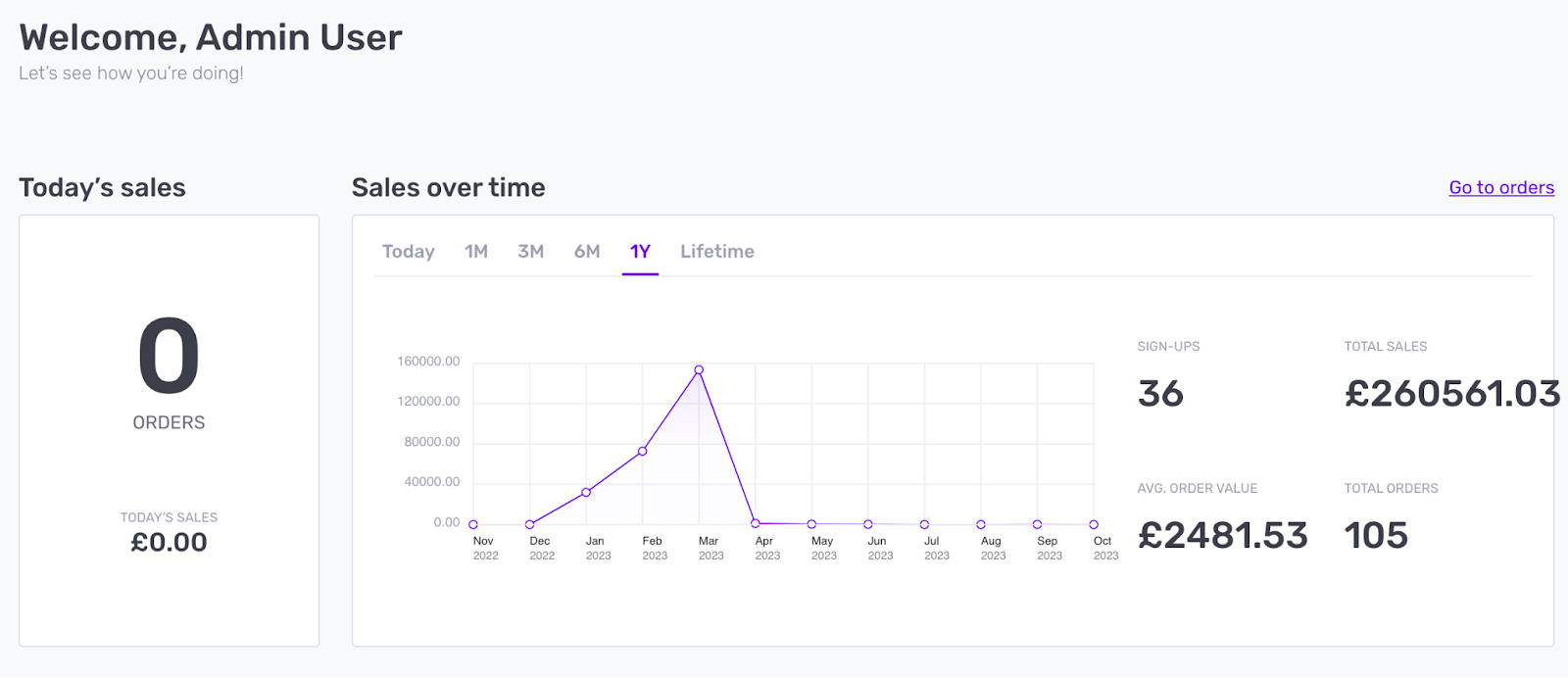
To keep a close eye on your store's performance, you need to head to your analytics dashboard. This provides valuable insights into sales trends over time, daily sales figures and downloadable order reports in CSV format, allowing you to monitor and analyse your entire business's growth.
Conclusion
Hopefully, you’re now clearer on what ecommerce and dropshipping are, what their main differences are and what’s better for your business. To get started with your journey, hit the banner below 👇
Want to build your online store?
Book a demoSpeak with one of our product experts today.
By proceeding you agree to Builder.ai’s privacy policy and terms and conditions

Ananth Ramanathan runs Studio Store business at Builder.ai with a mission of digitising a 1M+ micro SMEs in the next 5 years. He oversees the commercial, product, and customer success functions to rapidly scale Studio Store globally. Ananth's an experienced tech business operator, a failed entrepreneur, and an active angel investor.

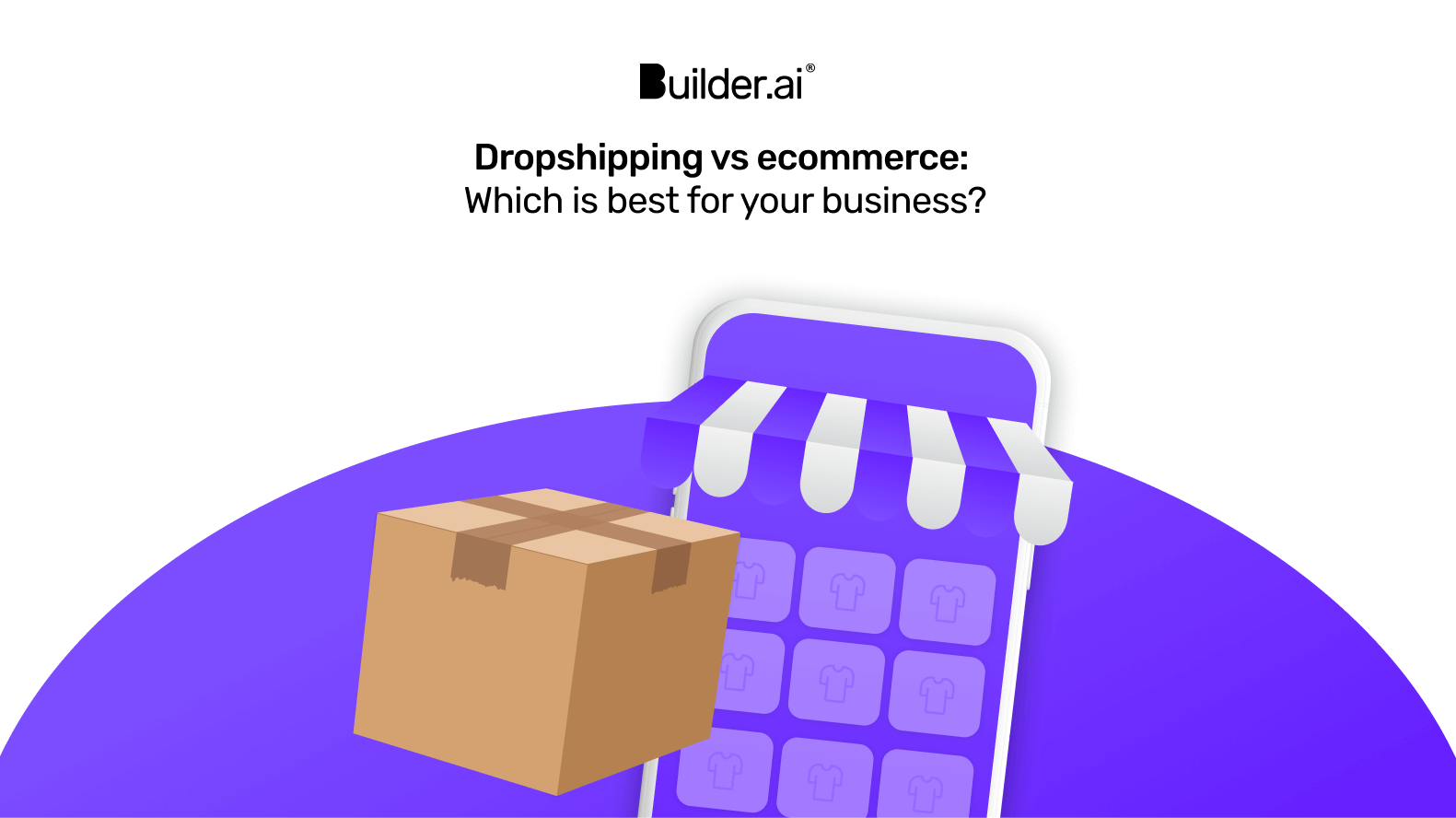

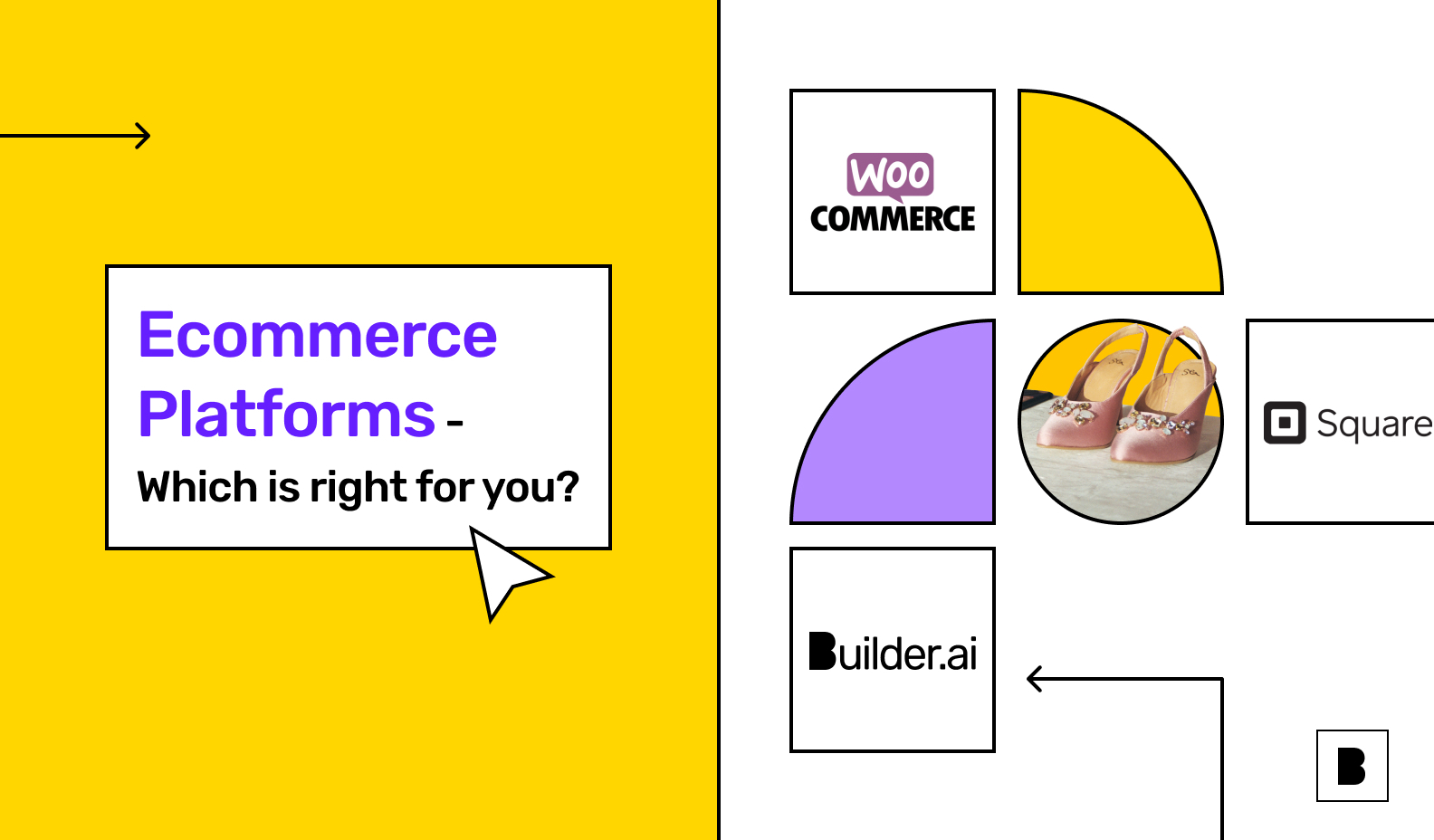
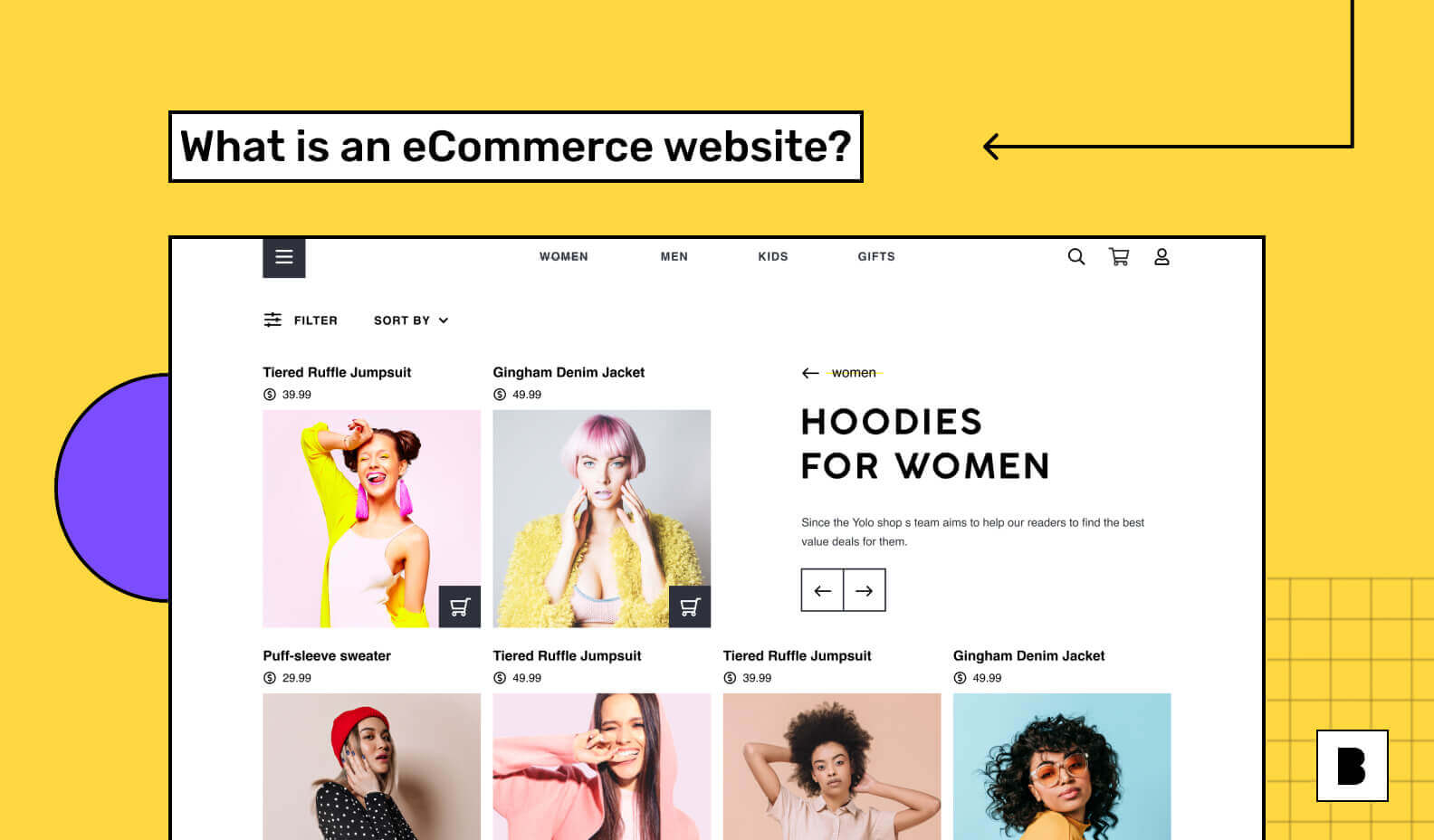


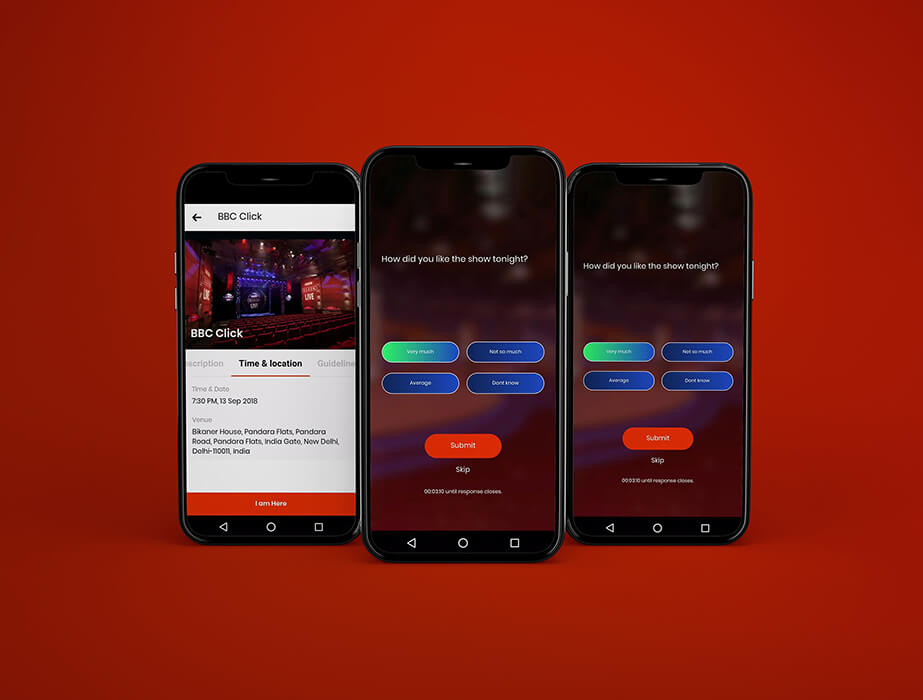

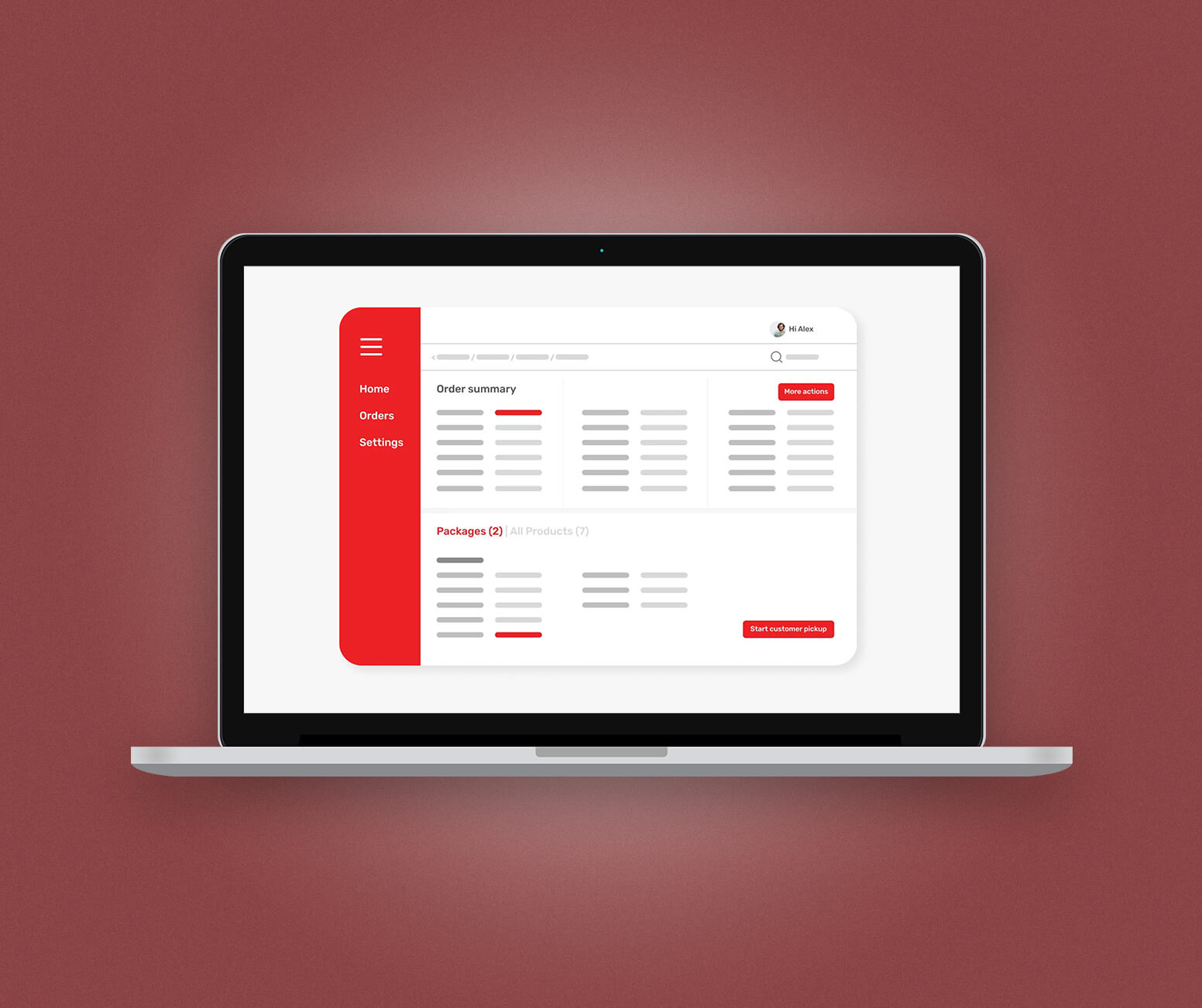


 Facebook
Facebook X
X LinkedIn
LinkedIn YouTube
YouTube Instagram
Instagram RSS
RSS


